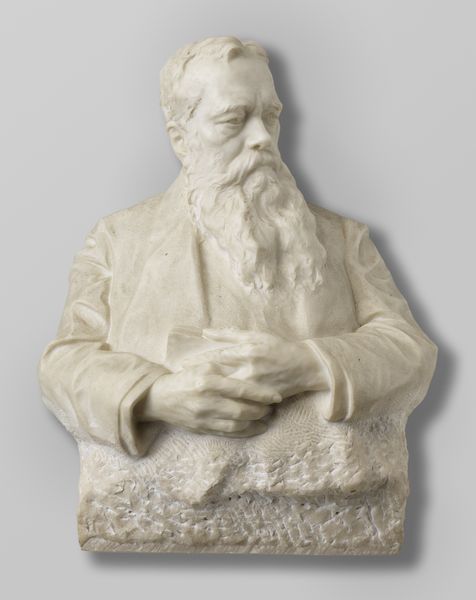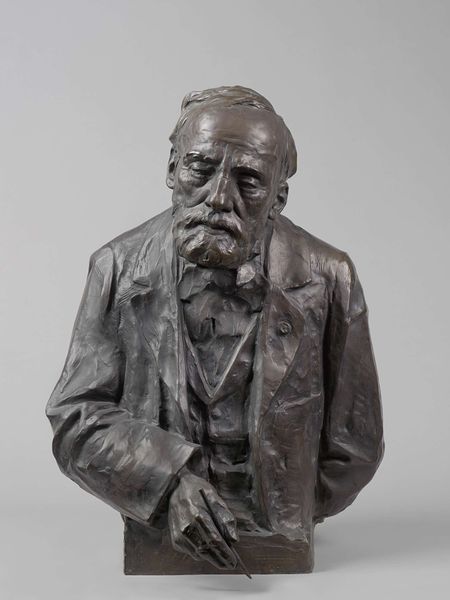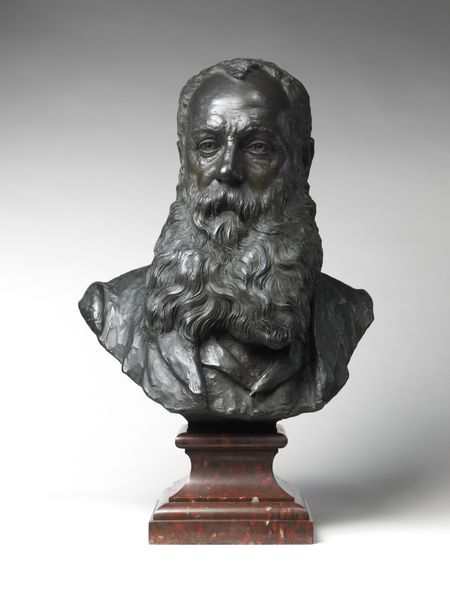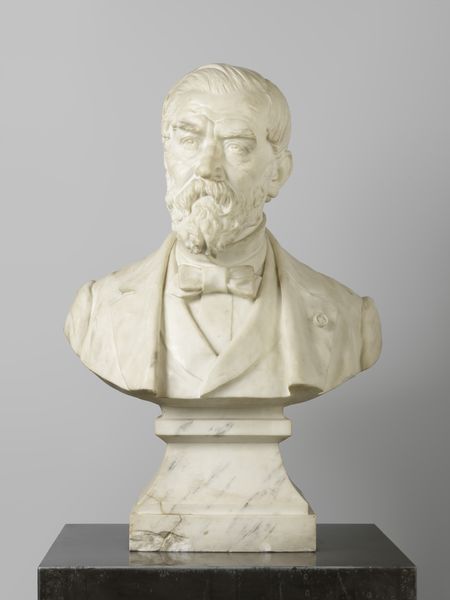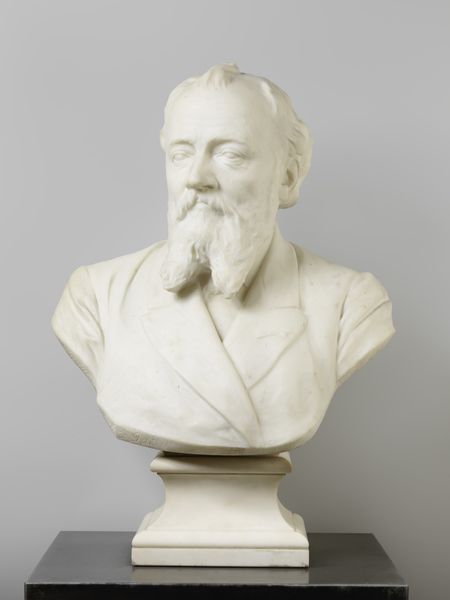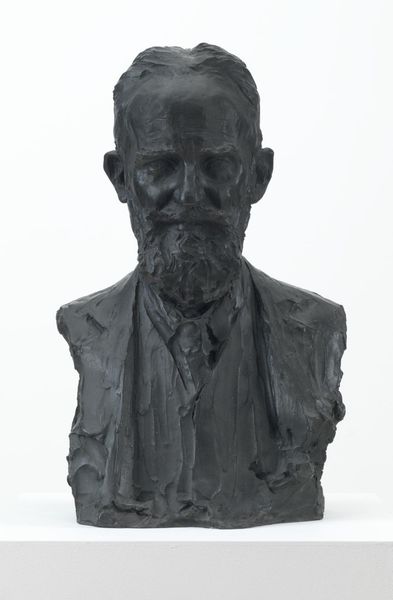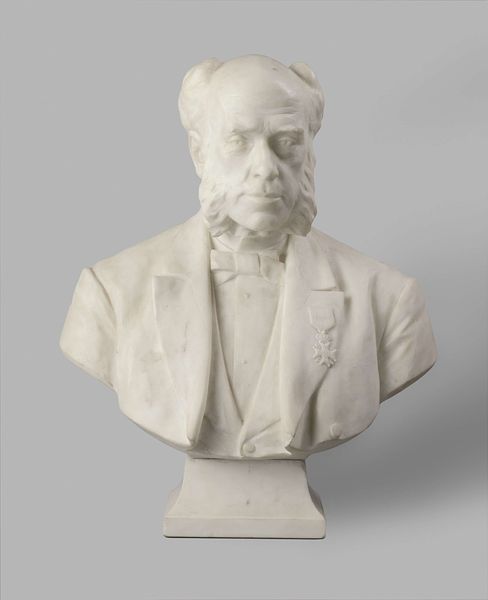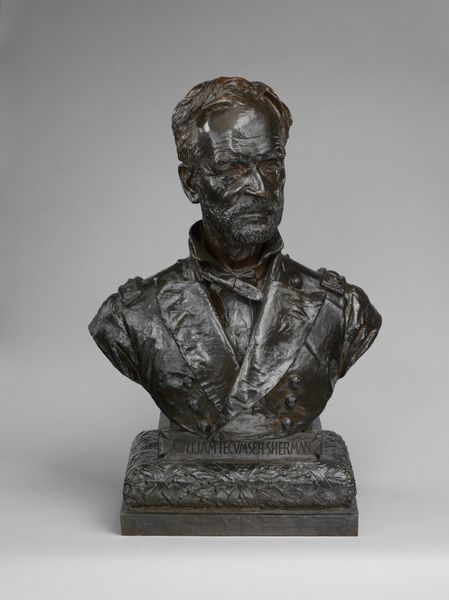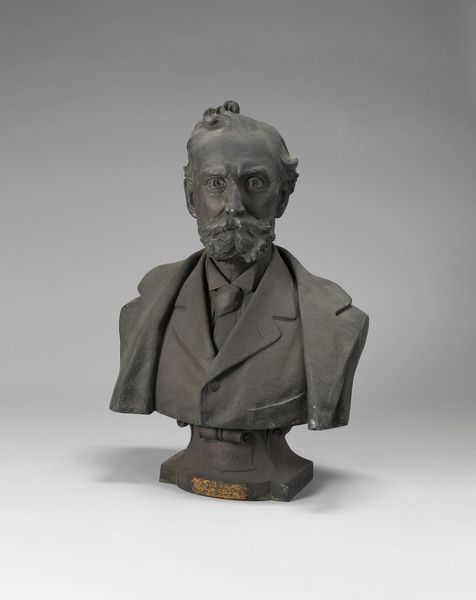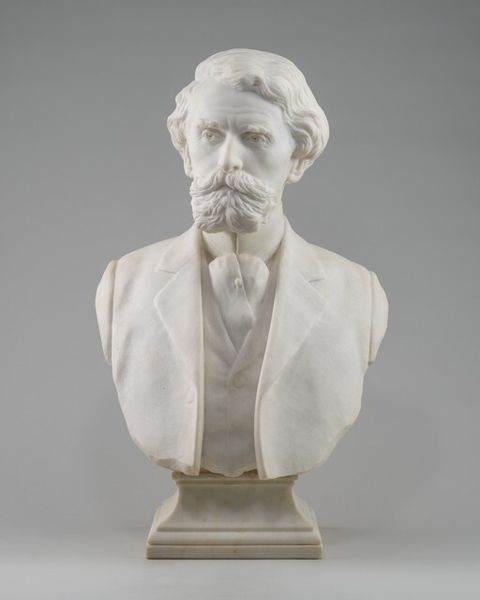
Borstbeeld met sokkel van jhr. Barthold Willem Floris van Riemsdijk after 1914
0:00
0:00
toondupuis
Rijksmuseum
sculpture, marble
#
light coloured
#
sculptural image
#
sculpture
#
academic-art
#
marble
#
realism
#
statue
Dimensions: height 65 cm, width 51 cm, depth 42 cm, weight 140 kg
Copyright: Rijks Museum: Open Domain
Curator: Immediately striking. The smoothness of the marble is juxtaposed against the textured beard, an almost tactile representation of power and intellect. Editor: Indeed. What you are seeing here is a marble bust, created after 1914 by Toon Dupuis, depicting Jonkheer Barthold Willem Floris van Riemsdijk, now residing here at the Rijksmuseum. Curator: I'm curious about the choice of marble. It's a material often associated with classical sculpture and therefore with authority, status, and permanence. Editor: Exactly. Van Riemsdijk was a key figure here, serving as director of the Rijksmuseum. So this artwork has a function within the museum’s power structure. It is both a portrait of a man and a statement of institutional legacy. Curator: It also brings the cost into sharp focus; marble of this scale had to be quarried, transported, carved…a significant investment of labour, literally shaping someone's legacy from the earth itself. And observe his pose - arms crossed, exuding confidence. The very gesture suggests control and self-assurance. Editor: Consider too that the Rijksmuseum itself, even today, presents a particular narrative of Dutch history and identity. So, commissioning a piece like this underscores the museum's own self-image and its desired place within that national narrative. This sculpture isn't just a portrait, it's a claim to authority within a specific cultural and historical context. Curator: Absolutely. Even down to the dark plinth contrasts with the bust, it provides visual weight and anchoring, solidifying Riemsdijk's presence and, by extension, the museum’s foundations. You really have to look into where the marble was sourced from, which craftspeople worked it, all that human labour invested into glorifying an important figure, as well as celebrating institutional legacy. Editor: The interplay between the sculpture and the institution that houses it—they inform and reinforce each other. Looking at this makes one question: Whose stories get told, and who gets remembered through these grand public displays? Curator: This really underlines how art functions not in a vacuum, but within specific structures. It highlights production, skill and resources as political choices that reflect societal hierarchies. Editor: Agreed. It compels us to consider how those in positions of power utilize art to solidify their standing and craft a lasting image of their influence.
Comments
No comments
Be the first to comment and join the conversation on the ultimate creative platform.
